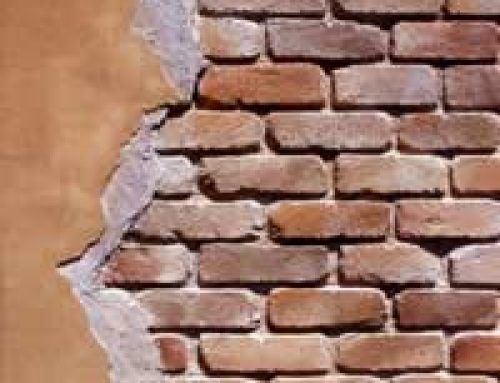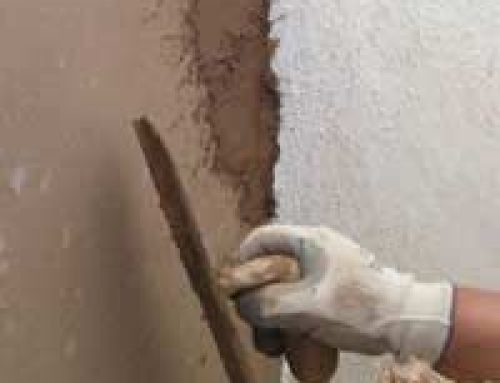
While beset by yet another set of official forms, or struggling to understand the latest turn the planning committee has taken over your application to build what they call in the trade a ‘non standard’ house, have you ever wondered why it all seems to be such hard work?
After all, with every shade of officialdom these days desperate to exhibit just how carbon-counted, climate-change-aware, low energy and generally green they are, you’d think they’d be positively encouraging you to be building something sustainable, not heaping hurdles in your way. If we’re all supposed to be doing our bit for the planet, why don’t all the parts seem to be quite joined up enough to help it happen?
Well, one man thinks he has the answer. According to retired construction project manager, Ian Bell, there’s a bit of a conspiracy afoot, aimed at keeping alternative building methods from becoming mainstream – and he’s pretty sure he knows why.
Contents
Shifting the dynamic
“What do you think that would do to property prices? What about the banks and the building societies? If you stop making people indebted for 20, 30 years or more just to put a roof over their heads, and give a home to their families, then the whole dynamic shifts – and the cosy status quo slips. Everything changes.”
“Think about it; your house is the most expensive thing you ever buy – but why do you get twice the house, for half the money in America? Because it’s probably built from wood! Try building a flat pack over here, and see what response you get.”
Financial headwinds
He points to the huge established construction industry, and how its success or failure is largely used as a barometer of the nation’s economic weather – particular in times when the strong financial headwinds are blowing, like now.
“What’s the first thing you hear when there’s the breath of another dip in the recession?” he asks – and then answers his own question with “invest in infrastructure projects, and affordable housing. So where is all this ‘affordable housing’, after all these years? Why are poorly paid workers still waiting to buy – and stuck in escalating rentals? Why does demand always outstrip supply? It doesn’t make much sense. ”
Political empowerment?
He says that rather than trying to impose a solution from the top down, politicians at all levels, from local councils right the way up to Westminster, should be looking to empower self-builders and actively encourage non traditional methods of construction, to help people help themselves.
Put like that, there’s no disputing that it does make a compelling case, but Bell says it is unlikely to happen any time soon. “Politicians of all hues have been encouraging homeowners to see their property values as synonymous with their own wealth. And a wealthy population tends to stay with the government that promises to protect that wealth. With the general public’s feelings of personal affluence wound up with property prices, the last thing anyone wants to see is the cost of home purchase falling by perhaps a half or a third – and that’s the kind of thing that just might happen if you completely break the mould on how you build houses.”
“There’s an obvious vested interest in not rocking the boat,” he says.
Not a blame game
Never-the-less, he’s very clear that he is not trying to play the blame game; he’s not even suggesting that what at times becomes effective collusion to maintain the position of ‘standard’ building techniques – and by implication keep out the non standard – is deliberate, or even conscious.
“Construction in the UK is a mature industry, and that makes it fundamentally risk-averse. It’s very conservative – with a small ‘c’ – so it tends to stay with established solutions. Planners are the same. They like to keep things broadly similar. With very few exceptions, they don’t really push the boundaries, and when they do, it’s not going to be Mrs Smith’s minimum impact earth-house that’ll be getting the nod – it’ll be some grandiose new sporting facility, or a revolutionary office block. It’s natural enough, but it all acts to make things difficult for little projects and one-offs.”
Industry studies
So where does the industry itself stand on this issue? Well, oddly enough, there is some evidence to suggest that it tends to agree – at least in part.
February’s ‘Offsite Housing Review’ from the Construction Industry Council (CIC) notes the predominant position of house builders as what it calls “the delivery mechanism for new dwellings”, and their inevitable tendency to run developments to suit the commercial needs of their own particular business models. Although this is obviously a predominantly self-serving approach, the report concludes that it is one which is “laced with opportunistic collaborations which take place between house builders, Housing Associations, land owners and property developers, when mutual benefits are on offer.” It is precisely this, some might argue, which constitutes the basis of Bell’s unconscious conspiracy amongst the big players in the game, and yields the informal arrangements of convenience which shape the nature of our housing stock.
Whether that truly equates to a pressure to exclude non standard building techniques and materials from the mainstream is, of course, open to question, but that small ‘c’ conservative, commercial character is clearly in evidence. “If the use of traditional methods remains the best commercial choice then these methods will continue in use,” say the authors of February’s report – and that, Bell would say, pretty much guarantees that they will.
A conspiracy?
So, is there a conspiracy?
The answer has to be ‘yes’ – well, at least from a certain point of view – and the irony is, that there always has been, no matter how far back in history you choose to go. It’s tempting to wonder, for example, if Stonehenge would have been built if there had been such things as Planning Departments at the time, or speculate about what early Tudor builders really thought about those new-fangled black and white buildings that were popping up all around them.
In that sense, there is undeniably a conspiracy of conservatism in the construction industry – and in many ways, it’s probably just as well. We all want to have some assurance that our new home will not collapse around our ears – or, less dramatically, just not let in the rain. Mainstream builders stay with tried-and-tested methods and materials largely because they work, and Bell is unquestionably right that the whole system – from mortgage lenders and insurers, to planners and legislators – is expressly set up to support them in that decision.
Not really
Does that constitute a real, bona fide, Mulder-and-Scully type conspiracy? Almost certainly not; things are, after all, noticeably changing. Domestic renewable installations, water recycling and energy efficiency have become widely accepted, and even unusual building materials – straw, wood, cob – are no longer as fringe as they once were. Perhaps it is not so much mainstream interests colluding to exclude these new approaches, so much as their not having yet attained sufficient critical mass to overcome the monolithic inertia of the building world.
Today, the UK’s self-build market segment remains relatively small – a mere 7% compared with a European average of around 50%, according to CIC figures – but it has a clear potential to expand over the coming years. At the same time, some of the major mortgage lenders have been involved in the Build Offsite Property Appraisal Scheme (BOPAS) – an appraisal project for innovative construction, which should ultimately help provide a way to evaluate the risks and durability of new technologies and new materials.
So, is there really a conspiracy afoot amongst planners, local and national government, builders and financiers to keep alternative building methods out of the mainstream to buoy up the housing market and inflate the general public’s feeling of wellbeing and affluence? I see that as an effect, not a cause, and one which will become less apparent as self-building and sustainability grow.
A conspiracy? No, on balance, I don’t think so, but as Harold Finch, principal protagonist in Person of Interest and the (fictional) inventor of ‘The Machine’ says, “only the paranoid survive.”
So perhaps the more important question is, what do you think?





I am seriously interested in semi underground construction. And actively looking for an architect For a one dwelling project ln yorkshire. On a gently slopeing site good access . But the planners will need something almost invisible. Any recommendations for an architect with this experience ?
@auburn.You could try the Architects journal or the UK Green Building Council. Let us know how you get on, it would be good to feature some readers’ stories here.
So I’m ready to get my family out the rat race.. we live in south Staffordshire. Help do we buy land first or speak to local councils first about chances of getting planning permission on different pieces of land? We want to self build and there is so much red tape and planning permission. We want to go as green as we can afford to. I want to be growing good to use and potentially sell on I’d like to teach other crafting and have crafting events happen on site. Is it easier to do something on a commercial level that has a homestead thrown in or better the other way? Hoping to buy some farm land as got a better chance of it being affordable to us. Any advice would be truly truly so helpful. Thanks in advance.